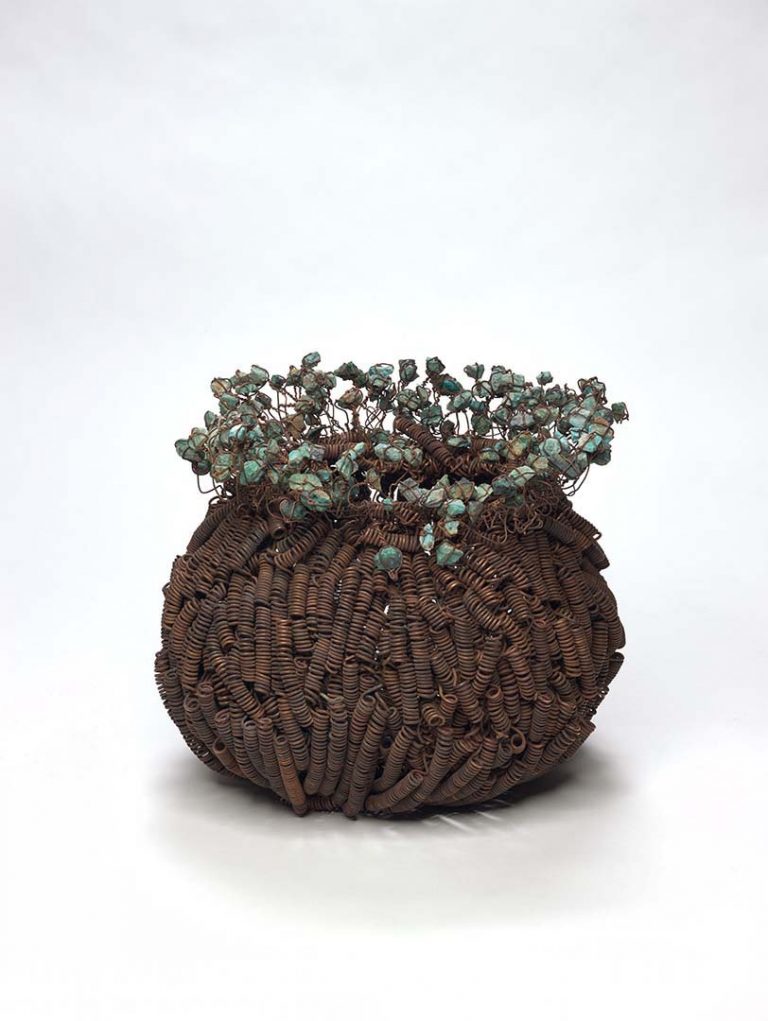We acknowledge the Traditional Owners of the land on which the Queensland Art Gallery | Gallery of Modern Art stands and recognise the creative contribution First Australians make to the art and culture of this country.

Shirley Macnamara / Indjalandji/Alyawarr / Australia b.1949 / Nathaniel Macnamara / Australia b.2004 / Cu 2016 / Hand-coiled copper wire and raw copper / 22 x 25 x 25cm / Purchased 2017 with funds from Gina Fairfax through the Queensland Art Gallery | Gallery of Modern Art Foundation / Collection: Queensland Art Gallery | Gallery of Modern Art / © The artists
Shirley MacnamaraCu 2016
Not Currently on Display
For Cu, Shirley Macnamara has wound discarded copper wire around a screwdriver to make multiple spring-like coils. Together, they form an object that references the deep holes of abandoned copper-mining exploration sites that scar the artist’s family land at Mount Guide Station in western Queensland.
Macnamara’s grandson, Nathaniel, worked with her to make the copper wire and raw copper ‘tree’ shapes, to depict an overhead view of the snappy gums that grow on the surrounding hills, now levelled for mining. These trees can take decades to grow in the hot, dry climate of western Queensland, and their destruction is felt for generations.
Shirley Macnamara runs a thriving cattle property with her son and his family near Mount Isa in western Queensland. She has close ties with Camooweal and the surrounding country through her mother’s Indjalandji people, and with Alyawarr lands, particularly Lake Nash, through her father.
Macnamara started painting in 1987, but began to experiment with weaving in 1992. She is well known for the guutu (vessels) she makes using combinations of synthetic and natural materials. In particular, she likes to work with spinifex (Triodia pungens), a tough, spikey native grass commonly found in the driest parts of Australia.
Spinifex’s long roots help keep the soil together so that the sand does not spread and create more desert. For Macnamara, spinifex embodies strength and utility, and she uses it to create tactile sculptures that reflect her surroundings, culture and history, as well as personal experiences and memories.
Discussion Questions
1. Consider how Cu appears different when viewed from the side compared to from above. Discuss how viewing from different perspectives contribute to your understanding three-dimensional works.
2. Macnamara usually likes to make her vessels from spinifex. Why did she use copper wire for this work?
Activities
Create a sculpture that represents a natural or artificial landform using found materials. Consider how an audience might view your sculpture from different angles and how you can use this to enhance the meaning of the work.